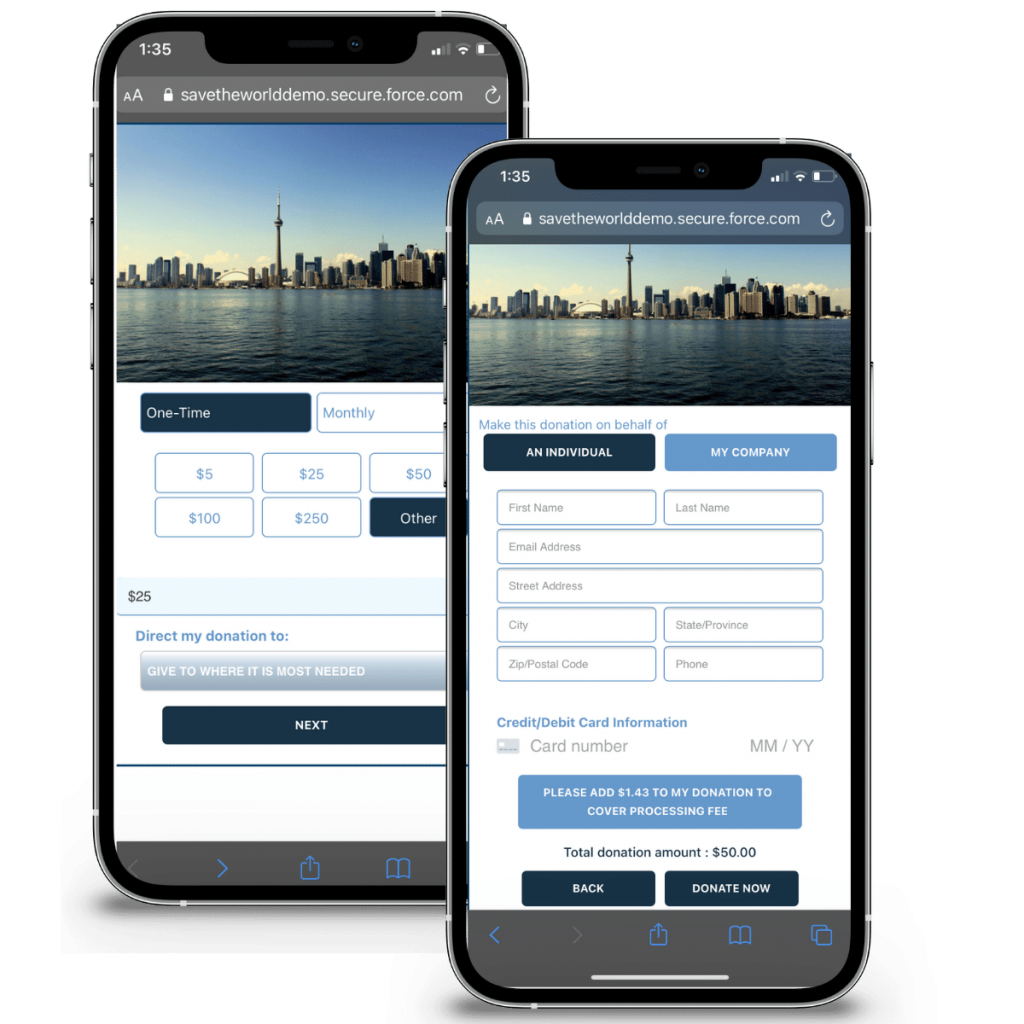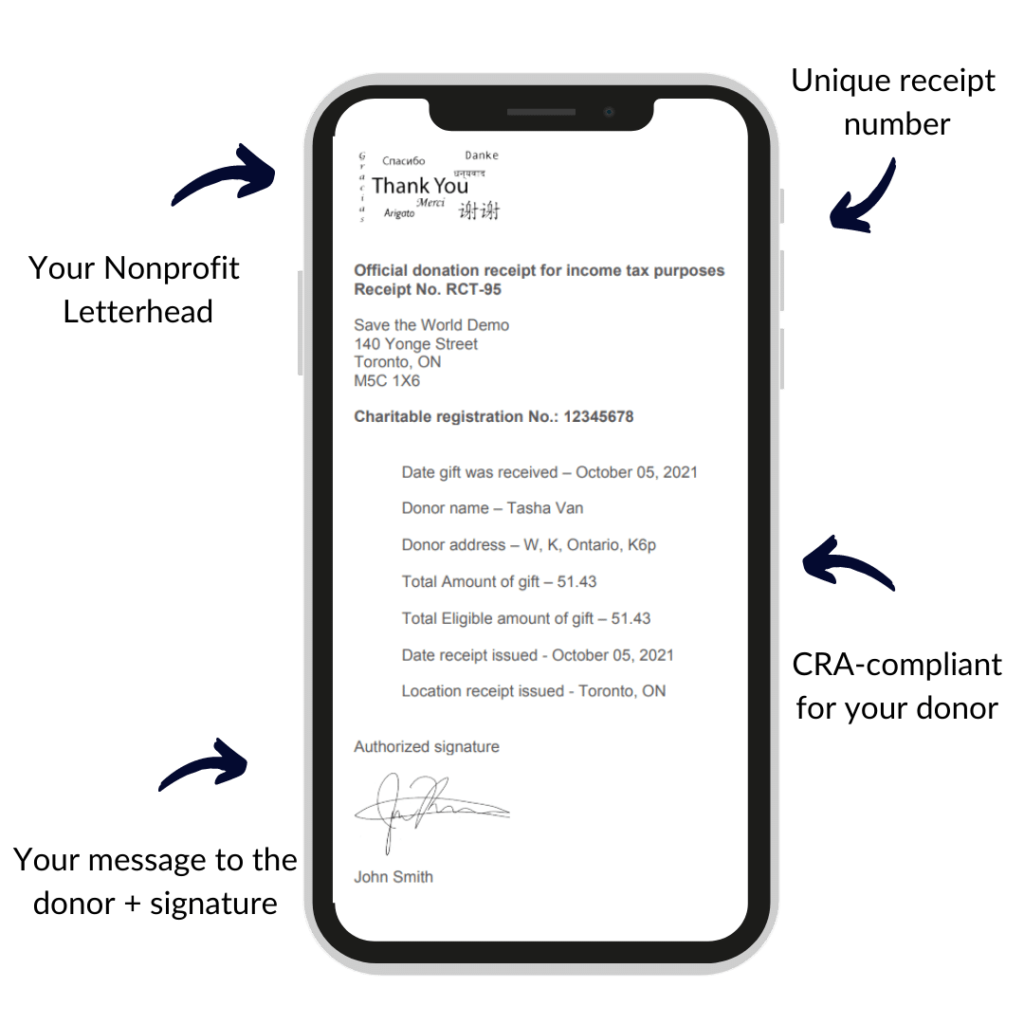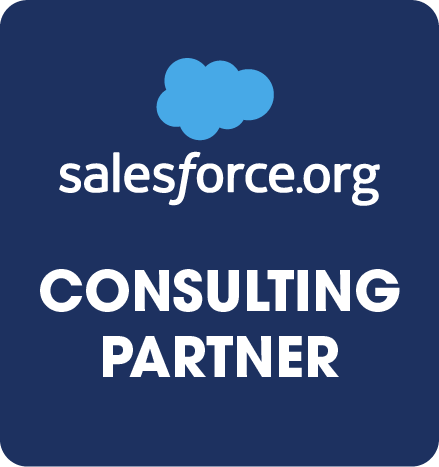Good fundraisers know that attracting and retaining donors is key to any nonprofit’s success. But did you know that a poorly crafted online donation form has the power to turn donors away? With a simple and customized online form, you can instead ensure potential donors follow through with their gifts and increase the success rate of converting them into recurring donors (or converting this into recurring revenue).
Whether your work advances cancer research or promotes a local food bank, you’re leading the charge to make real change possible. When you apply that same focus to your organization’s online giving experience, it streamlines the process for your donor and makes donating a breeze.
If your donation form isn’t straightforward to navigate, even your most passionate supporters can bail. And that’s dire news for fundraisers that need every donor they can engage. The fewer obstacles to donating, the more likely a donor will come back to do it again. It should be as easy as it is to purchase on Amazon.
For each campaign, take some time to examine your giving form to see if it’s past its prime, and keep the following questions top of mind:
- Do you have the appropriate form fields in place?
- Are you reflecting your nonprofit’s brand voice and aesthetic design?
- Is your form clear-cut and easy to navigate?
- Is the information on your form relevant and necessary?
- Are you explaining why a donation matters?
- Is your form mobile-friendly?
If you answer more “no” than “yes” to these questions, it’s a good sign your donation form needs an overhaul.

Why is an optimized donation form so important?
Donation forms should be straightforward. It doesn’t force all donors to register with your website to give. It doesn’t have clutter that causes distractions or too many fields. And it doesn’t do anything in bad taste like failing to say thank you.
What an optimized donation form does is state a compelling “why” people should give to your nonprofit. It does offer recurring giving options and secure payment options. And it does send automated tax receipts to donors automatically when a donation is made.
It also comes with a major bonus for your organization: it captures and sorts donor data you collect during the donation process to run more efficient, successful fundraising campaigns in the future.
Donors don’t want to deal with difficult donation processes, no matter how wonderful your cause is. By keeping your form simple and concise, making it mobile-friendly, and sticking to donation form best practices, you’ll convert potential supporters into (recurring) donors instead of driving them away.
fundraisingManager donation form
Here at cloudStack Services, we know the importance of your donation page and what it means for the growth of your nonprofit.
Our online donation form is a key feature of our nonprofit CRM software, fundraisingManager.
Built on the Salesforce platform, fundraisingManager offers a reliable and efficient way to collect, organize, sort, and understand donor data. The process for setting it up is fully automated, meaning it won’t add another big task to your fundraising to-do list. Once it’s ready to go, it collects and feeds you data in whatever manner you choose.
fundraisingManager’s donation form is customizable, integrates with a popular payment processor, is easy to embed into any page or post on your website, and helps you collect data securely.
Let’s explore our online donation form to learn what makes it so important to drive online giving and the best practices you can apply to optimize it.
Let’s dive in.
Customize your donation form
Choose your language
We support many different languages so you can adapt your donation form to your audience and speak to your donors effectively. Spanish? Got it. Hebrew? Can do. Inuktitut? You betcha.

Add mandatory fields
When your donor arrives at your donation form, you want them to choose their gift size, whether they enter in their amount or a suggested amount from donation tiers.
From there, collect the essential data you need to process their payment, including:
- Donor’s first and last name
- Email address/mailing address
- Phone number
- Billing information
- Donating on behalf of an individual or organization
This data is vital to automatically generate and send both a thank-you acknowledgement and a CRA-compliant donation receipt.

Consider donation tiers
Donors are more inspired to give when they know their donation’s impact. So, when they get to your donation page, they also appreciate a little support, which is why we advocate adding donation tiers to your form.
The goal of tiers is to give your donors choices through pre-determined giving levels (e.g., $25, $50, $75, $100). In some cases, nonprofits choose to associate donation tiers with what they’re working to accomplish. For instance, a $100 donation may equal 40 meals gifted to a food bank.
We recommend creating about 4-6 donation tiers. By doing so, your donors can easily decide on the right tier for them or decide to enter their amount, without feeling inundated with options.
But how do you decide what donation amounts to recommend? Do you aim low and anticipate people to give more? Do you set the bar high and risk people leaving your donation page because they can’t give that much?
The best way to determine the tier values is to look at your donor data. Find your average donation from past fundraising campaigns and base all of your tiers on that. Give donors a tier or two lower and a tier or two higher.

Offer recurring gift options
When donors choose to give a recurring donation, they’re pledging to give a certain amount of money regularly, whether it’s weekly, monthly or annual. It’s a great way to increase retention rates and secure an ongoing revenue stream.
Our donation form makes frequent giving a smooth and quick process for donors, allowing them to set up a recurring donation plan in minutes.

Pass the processing fees to donors
Sometimes, fundraising services require some upfront costs, like processing fees. While these charges are generally minimal, the cost of processing will start to add up as more donations roll in.
Donation tipping is where donors opt-in to cover payment processing fees for your organization (which is typically 2-5%). The simplest way to offer this choice is to include an easy-to-select checkbox on your donation page.
Rather than donating $20 and paying the $1.50 or so in fees to the card processing company, the donor contributes $21.50 and knows that your organization receives the $20 they planned.
Chances are, your donors will be willing to pay a few extra dollars to ensure their entire donation goes to support your cause. With fundraisingManager, you can quickly enable this option on your donation forms. If your donors choose to select it (and we’ve noticed that many do), your operational costs can significantly drop.

Use a secure payment processor
We use the trustworthy, secure payment processor, Stripe, on our donation forms. Stripe transfers the money from your donor’s account into yours. Donors can stay on your donation page to make the payment, which means they aren’t redirected to a third-party online payment portal.
Stripe also doesn’t ask donors to set up an account to donate through their processor; the donor only needs a credit card. Stripe’s nonprofit processing fee is 2.2% and $0.30 per transaction.
When it comes to choosing a payment processor, weigh your options and think about your donor’s experience. To ensure your information is safe, never select a payment processor that isn’t secure.
Donation receipt and acknowledgements
After a donation is made, a CRA-compliant tax-deductible receipt is automatically sent to donors. A receipt doesn’t necessarily need to be complicated. Some of the most effective donation receipts include these elements:
- Include your organization’s name
- Address the donor directly by name
- Acknowledge the donation amount
- Information on how the transaction will show on their credit card statement
- Tax receipt information, including nonprofit contact information, transaction number, and date of donation.
- You can merge the receipt with a short thank-you letter. Let your donors know how much you appreciate (and can’t operate without) their support, which can encourage additional gifts in the future.

A win-win for you and your donors
By incorporating these essential elements for an online donation form, you’re giving your donors a great giving experience, while streamlining your process at the same time. A great donation form is a win-win for everyone involved.
Try out our sample online donation form here or request a demo of our product, fundraisingManager.


